Nature Photography by Richard L. Bowman
Flowers & Plants Blog
Flowers & Plants Blog
No, the plants did not go on vacation nor work in the garden, we did. Check out my other nature blogs (birds and landscapes) for more photos from our family vacation.
The Common Burdock was down near the small stream as it meandered through the meadow (extended yard).
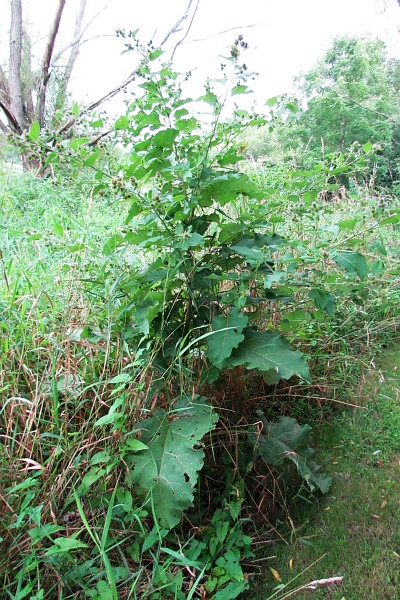
Common Burdock, Halifax, PA, USA (19-Jul-13; © Richard L. Bowman)
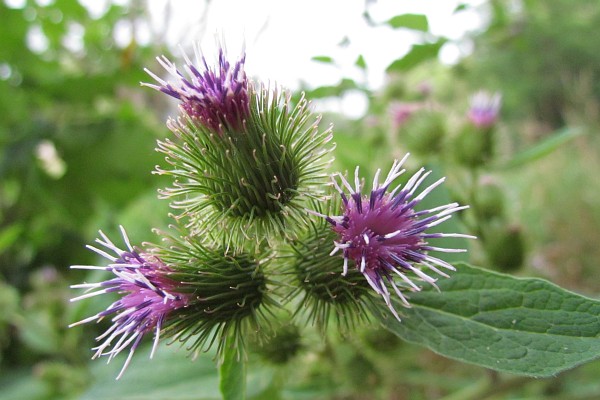
Close-up of the Flowers of the Common Burdock, Halifax, PA, USA (19-Jul-13; © Richard L. Bowman)
And from the week before as I worked in the garden, here is a weed that is a member of the Hibiscus group. Sometimes it is called the Venice Mallow or the Flower-of-an-hour.
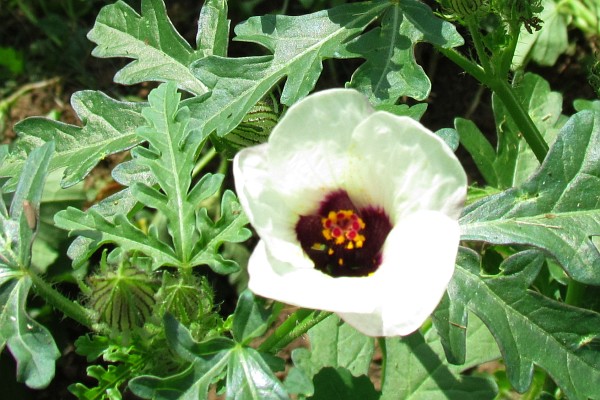
Venice Mallow, Harrisonburg, VA, USA (11-Jul-13; © Richard L. Bowman)
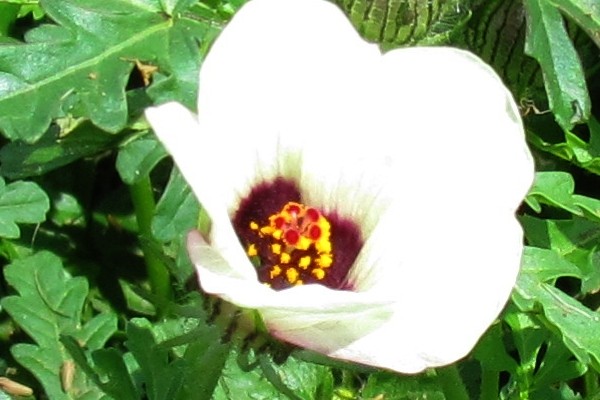
Venice Mallow close-up, Harrisonburg, VA, USA (11-Jul-13; © Richard L. Bowman)
While I do not have a photo with my thumb showing, the blooms above of the Venice Mallow are about 1 1/2 inches (4 cm) accross.
I am amazed by how many plants I see as weeds in our garden or lawn are actually transplanted species from some other continent. So I guess we can call them invasive species. But then I ponder some more and wonder if we are only seeing an accelerated expression of a phenomenon that helps these species to survive and adds to the biological diversity of our planet. Hmm... Maybe a biologist has an idea to share.
The first two photos today are of such an invasive plant--"Tree-of-Heaven." As my friend Dr. Ed Lickey says. it is "a bad weed tree from Asia" (primarily from China and Taiwan).
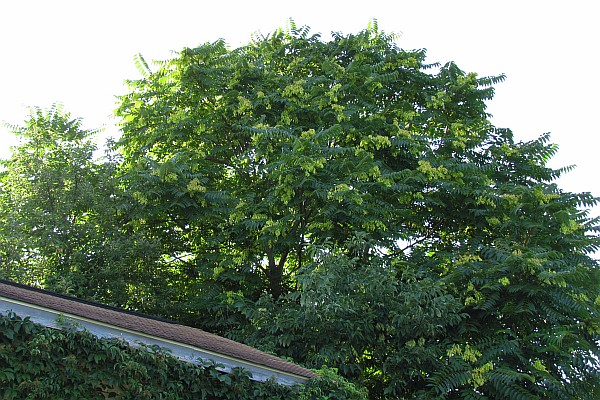
Tree of Heaven, Harrisonburg, VA, USA (15-Jul-13; © Richard L. Bowman)
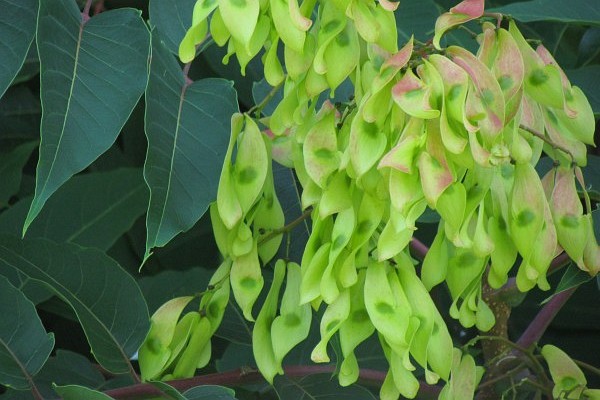
Tree of Heaven Seed Pods, Harrisonburg, VA, USA (15-Jul-13; © Richard L. Bowman)
The Tree-of-Heaven is a very fast growing tree here in the United
States. And I, at least, have found it very difficult to get rid of.
Sawing it down does no good since it is a prolific "re-grower." And even
digging it up leaves roots which quickly send new shoots up through the
ground. For more info, visit:
https://en.wikipedia.org/wiki/
I particularly liked the reference to the ancient Chinese using it as a
cure for baldness!
But my next misplaced plant is the common Sunflower--replanted probably by the birds eating the seeds in my bird feeders. In fact we must have a half-dozen or more Sunflowers growing well in our flower beds which we never planted.
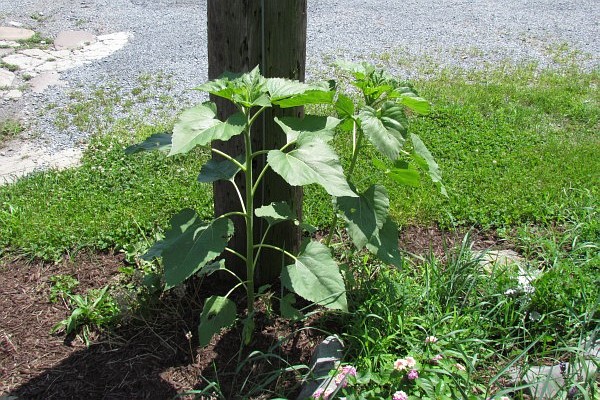
Sunflowers gathered around the electric pole in our front yard, Harrisonburg, VA, USA (15-Jul-13; © Richard L. Bowman)
July 10, 2013
After returning on Sunday after seven days in Phoenix, AZ, USA, for a church conference, I discovered that our flower bed out by our mailbox had some nice examples of Chicory. This flower I had introduced on June 29, but here are two photos that I think are even better.
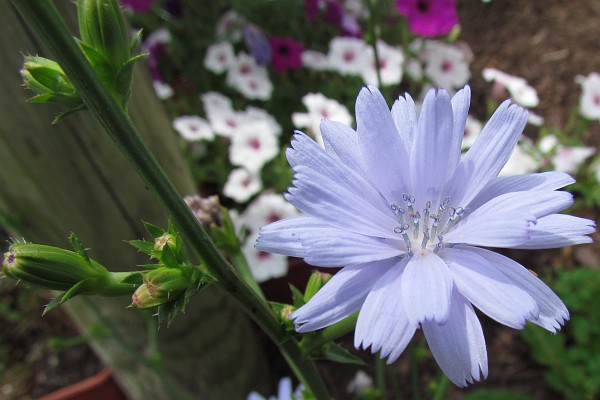
Chicory, in our front yard, Harrisonburg, VA, USA (8-Jul-13; © Richard L. Bowman)
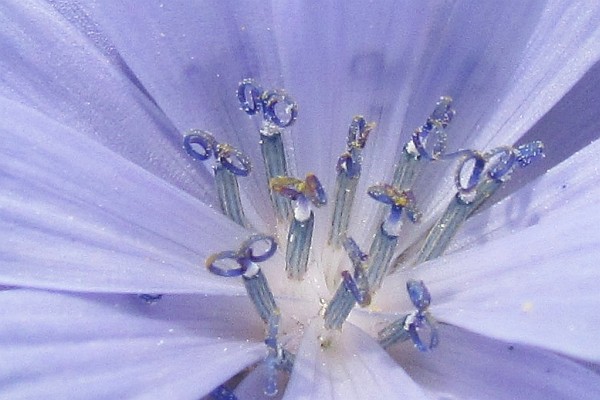
A Close-up of Chicory, in our front yard, Harrisonburg, VA, USA (8-Jul-13; © Richard L. Bowman)
It seems that there are almost as many ways to reproduce flowers through seeds as there are species of plants. Amazing!
--©2013, Richard L. Bowman